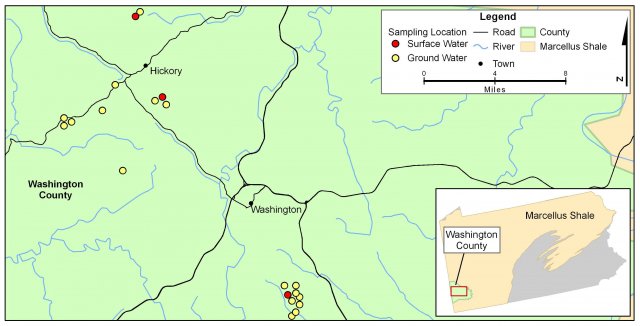Retrospective Case Study in Southwestern Pennsylvania
Case Study Background
EPA conducted a retrospective case study in southwestern Pennsylvania to investigate reported instances of contaminated drinking water resources in areas where hydraulic fracturing activities occurred. This case study provided valuable insight into vulnerabilities and potential pathways for impacts to drinking water resources from hydraulic fracturing activities such as: surface activities (including impoundments, and associated spills), and gas migration.
- Report: Retrospective Case Study in Southwestern Pennsylvania (PDF)
- Fact Sheet: Southwestern Pennsylvania Retrospective Case Study
Key Findings
- EPA found increased levels of chloride in ground water at locations near an impoundment site which contained hydraulic fracturing wastewaters and drilling waste. The chloride contamination likely originates from the impoundment site based on multiple lines of evidence.
- Background data showed that methane is naturally occurring in this area and was detected in 24% of the samples collected from domestic wells. The isotopic signature of the methane present in domestic wells was not similar to that of gas produced from the shale being hydraulically fractured.
State Activities at the Case Study Location
Pennsylvania’s Department of Environmental Protection has taken a multitude of steps to protect drinking water resources in the case study area, including issuing fines, working with the company to close the impoundment, overseeing the replacement of water supply wells, monitoring, and issuing notices of violations.
Sampling Activities
EPA completed three rounds of water sampling from July 2011 to May 2013. Water samples were collected from domestic wells, springs, and surface water where homeowners expressed concerns regarding potential adverse impacts on their well water and possible association with drilling or processes related to hydraulic fracturing.

